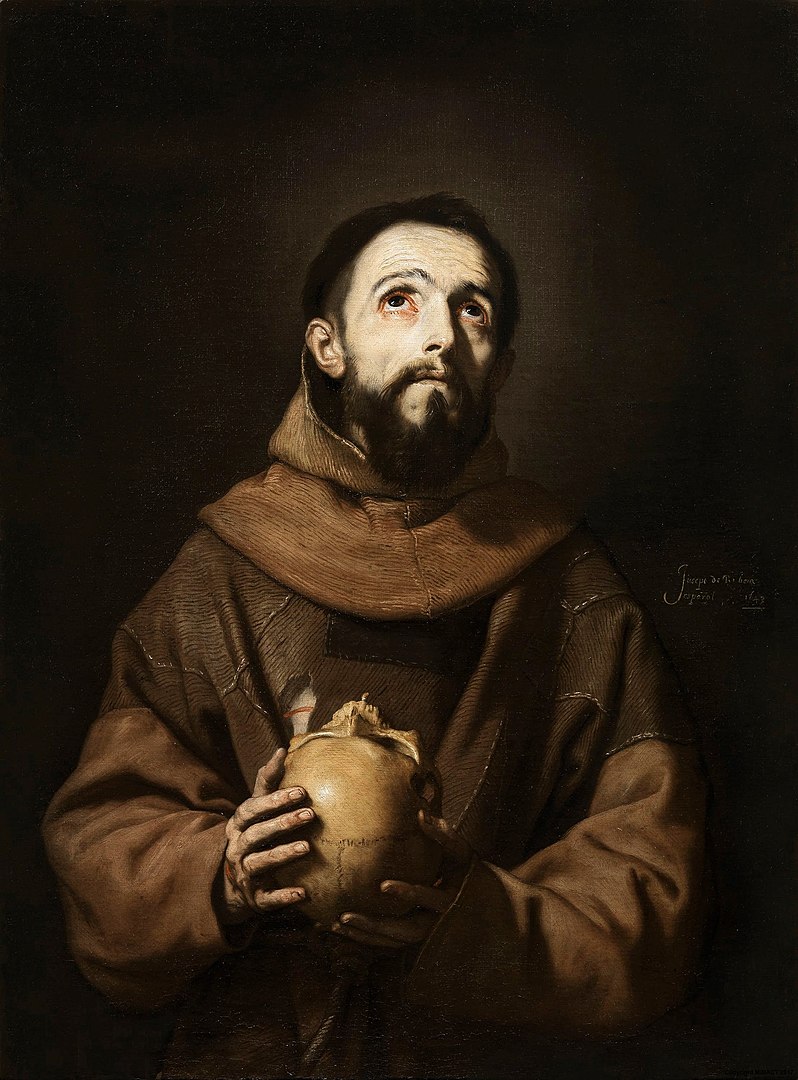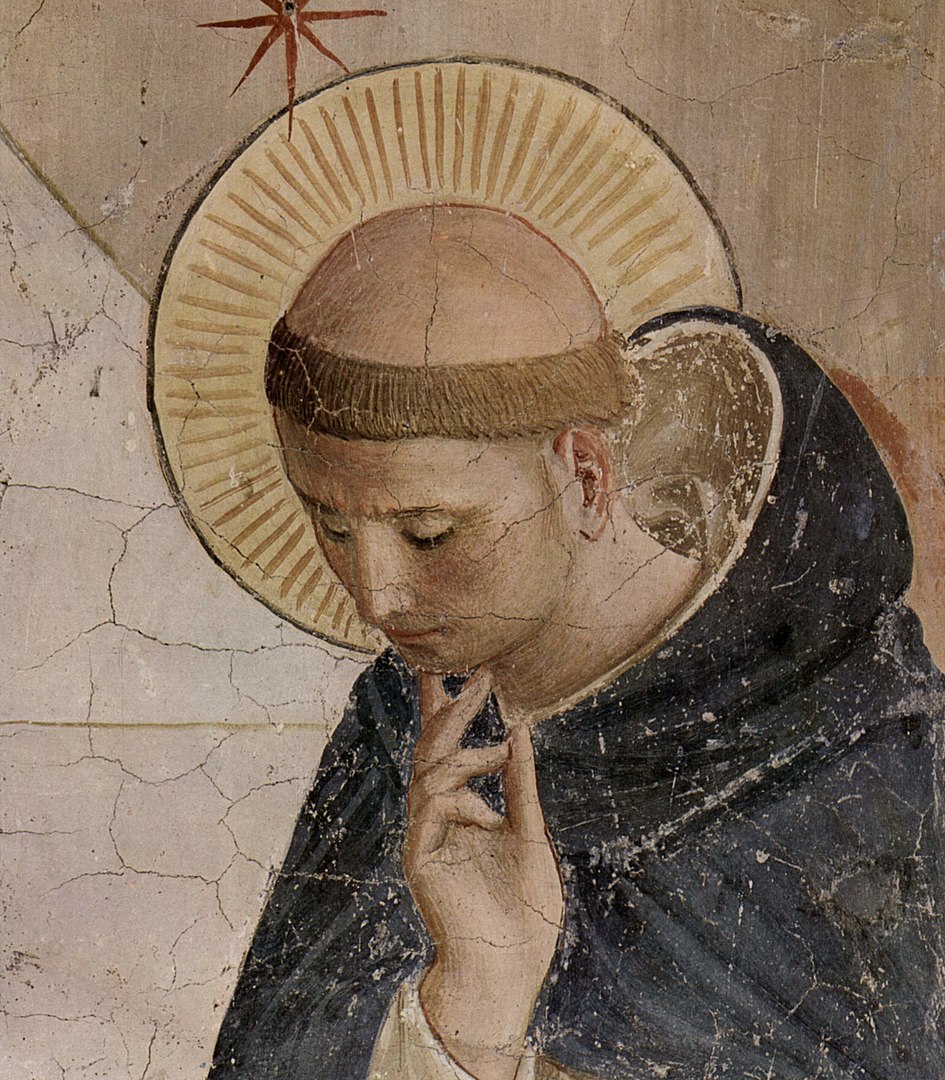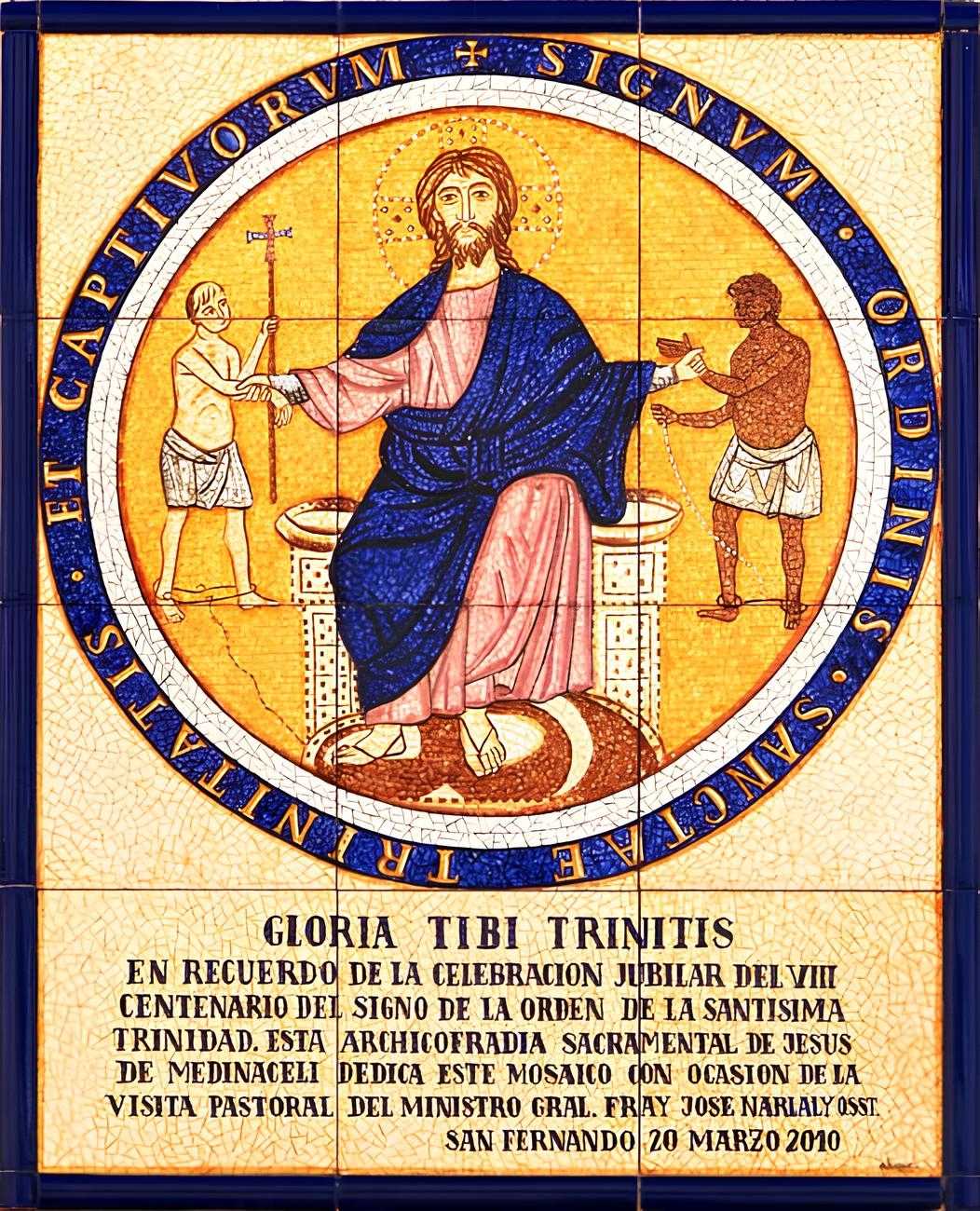Mendicant orders are Catholic religious orders characterized by living off the alms of others. They consist of brothers, known as friars; sisters, known as nuns; and tertiaries, formerly called Brothers and Sisters of the Order of Penance. The friars make up the First Order, the nuns the Second Order, and the tertiaries the Third Order.
Their members, both friars and nuns, take a vow of poverty, renouncing all types of personal or communal property or possessions and placing them at the disposal of the religious order to which they belong. Thus, they live in poverty, supported solely by charity. In addition to the vow of poverty they solemnly profess, they also take vows of chastity and obedience. Unlike monks, their members are not bound to the structure of a monastery.
Origins of the Mendicant Orders

The mendicant orders emerged in the Middle Ages around the 13th century with the aim of bringing a new direction to the religious life of the Catholic Church. These orders maintained the tradition of monastic rules based on study as well as the active lives of secular clergy, the military, and hospital orders. The Trinitarian Order (Latin: Ordo Sanctissimae Trinitatis et Captivorum; abbreviated OSsT), started in 1193 by the French Saint John of Matha, stood out among these three currents. It was the first non-armed active order in the Church, with its own rules, approved by Pope Innocent III in 1198.
Saint Francis of Assisi was the model of a friar, a man who renounced all material possessions and devoted his life to God under the vows of chastity, obedience, and poverty. Eleven more men joined him, imitating his life, and they embarked on a pilgrimage to Rome, where they presented their Rule of Life and requested its approval. In Rome, they encountered opposition from many monks and bishops who saw Francis and his brothers as beggars rather than religious figures.
However, Pope Innocent III did not share this view and approved the Order of Friars Minor in 1209. This was the second mendicant order, as the Order of the Brothers of the Blessed Virgin Mary of Mount Carmel was already established in Haifa, Palestine, and approved in 1204 with its own rule by Patriarch Albert of Jerusalem, now a saint.
The poverty vow in Mendicant Orders was a central tenet. Members renounced personal possessions and lived a life of radical poverty, relying on alms and the support of the communities they served.

A group of religious people who wanted to live in poverty and preach the gospel under the direction of the priest Saint Dominic (also known Dominic de Guzmán) approved the Order of Preachers in 1216.
In 1244, upon seeing the approval and fame enjoyed by the Franciscans and Dominicans, Pope Innocent IV decided to call together all the hermits of Tuscany and impose the Rule of Saint Augustine on them, which was already followed by many canons. This marked the beginning of the Order of Hermits of Saint Augustine (Order of Saint Augustine), which in 1256, during the time of Pope Alexander IV, underwent its definitive unification that continues to this day.
In 1247, the same Innocent IV introduced some modifications to the rule that Albert of Jerusalem had written for a group of pilgrims who had settled near Mount Carmel in Palestine. These pilgrims were living in a style inherited from the times of the prophet Elijah. This marked the birth of the Carmelite Order.
Mendicant Orders and Monastic Orders

The mendicant orders exhibit a distinctive “mixed lifestyle,” incorporating elements of both contemplative and active existence. They commit themselves to prayer, placing particular significance on the Eucharist and the Divine Office. In addition, they participate in preaching, evangelization, and education, which constitute their primary pursuits.
An often encountered misconception involves associating the male division, or first order, solely with active life and the female division, or second order, exclusively with contemplative life. However, both factions strive for equilibrium between contemplation and preaching.
Unlike traditional monastic orders that focused on a contemplative and secluded lifestyle, Mendicant Orders embraced an active and public role. They traveled, preached, and lived in poverty while serving the needs of communities.
Several notable distinctions set mendicant orders apart from monastic orders:
- Diverging from monastic communities where the leader is known as an abbot for males and an abbess for females, holding a position of authority over the other brethren with a lifelong tenure, friars and sisters have a prior or prioress, respectively. This distinction arises due to their fraternal and sororal nature, with their superior merely being the foremost among siblings. After completing their term, the prior reverts to being an ordinary member.
- No distinctions are made between lords and servants or between ladies and maids, as these designations once denoted social hierarchies. Historically, friars included choir friars who were proficient in Latin and often priests and lay brothers who lacked reading skills but still embraced religious life. This contrast was eventually abandoned to underscore equality among the brethren.
- Another divergence is the forsaking of the Vow of Stability by friars. This tradition, rooted in Benedictine practices, obligated monks to remain perpetually in the monastery where they initially joined, even if it belonged to the same order. Departure from the monastery was restricted, barring specific duties, with preaching not among them. In contrast, friars stand ready to heed divine providence, venturing wherever it may lead. They might spend one day in a convent and the next on a mission, engaging in preaching one day and tending to the sick the next. Their approach is proactive rather than passive.
- In terms of attire, monks don habits for daily tasks but don cowls—tunics featuring wide sleeves and hoods—over their habits for the Divine Office. Similarly, the secular clergy wear cassocks as everyday attire but adopt choir habits for Office attendance. In contrast, friars have a single habit that serves for domestic tasks, preaching, and prayer. It usually consists of a long tunic that represents poverty, a belt, or cincture for the Franciscans, tight to the waist that represents chastity, and a hood over the shoulders with a hood that represents obedience.
- A final crucial distinction between mendicant and monastic lives pertains to the location of their establishments. While monasteries are often situated outside cities or in remote locales like mountains or caves, friars’ and sisters’ convents are intentionally placed within urban settings to manifest a visible presence in society.
Since their inception, members of mendicant orders have been granted an array of privileges. These include exemptions from obedience to the diocesan bishop and, even in the present day, specific privileges related to absolution for “reserved” sins, including abortion.
List of Mendicant Orders

- Trinitarian Order or Order of the Most Holy Trinity and of Captives
- First Trinitarian Order Friars
- Second Order Trinitarian Nuns
- Third Order Trinitarian Laity
- Order of Friars Minor or Franciscans
- First Franciscan Order
- Second Franciscan Order or Poor Clares
- Third Order of St. Francis
- Order of Preachers or Dominicans
- First Dominican Order
- Second Order Dominicans or Catalinas
- Third Order Dominicans
- Order of St. Augustine or Augustinians
- First Order Augustinian
- Second Order Augustinian or Augustinian Sisters
- Third Order of Saint Augustine
- Order of Our Lady of Mount Carmel or Carmelites of the Ancient Observance
- First Carmelite Order
- Second Order Carmelite or Carmelites
- Third Order Carmelite
- Servite Order of the Servants of Mary or Servites
- First Order Friars Servants of Mary
- Second Order Servants of Mary
- Third Order Seculars
- Order of the Blessed Virgin Mary of Mercy, or Mercedarians
Over the years, new mendicant orders emerged from these orders as a result of the Recollect and Discalced life movements. Among them, the following stand out:
- Order of Friars Minor Capuchin or Capuchins.
- Order of Augustinian Recollects or Recollects.
- Order of the Discalced Friars of the Blessed Virgin of Mount Carmel or Discalced or Teresians.
- Order of the Bethlemite Brothers and Institute of the Bethlemite Sisters or Bethlemits
The two most prominent Mendicant Orders are the Franciscans and the Dominicans. The Franciscans, founded by Saint Francis of Assisi, emphasized poverty and humility, while the Dominicans, founded by Saint Dominic, focused on preaching and education.
Mendicant Orders
| Order | Official Name | Alias | Founder(s) | Foundation and Approval |
| Order of Augustinian Recollects | Ordo Augustinianorum Recollectorum | Agustinos Recoletos o Descalzos | Act V of the Chapter of Toledo. Fray Luis de León | 1588 – Toledo, Spain |
| Discalced Carmelites | Ordo Fratrum Carmelitarum Discalceatorum Beatae Mariae Virginis de Monte Carmelo | Carmelitas Descalzos | St. Teresa of Jesus and St. John of the Cross | 1562, Spain |
| Order of Friars Minor | Ordo Fratrum Minorum | Franciscanos | Saint Francis of Assisi | 1209 – Assisi, Italy |
| Order of Friars Preachers | Ordo Fratrum Praedicatorum | Dominicos | Saint Dominic | 1216 – Prouille, France for women – Toulouse, France for men |
| Order of Friars Minor Conventual | Order of Friars Minor Conventual | Conventual Franciscans or Minorites | Saint Francis of Assisi | 1209 – Rome, Italy |
| Order of Servants of Mary | Ordo Servorum Beatae Mariae Virginis | Servite Order | Seven Holy Founders | 1203 – Florence, Italy |
| Order of the Most Holy Trinity and of the Captives | Ordo Sanctissimae Trinitatis et Captivorum | Trinitarians | St. John of Mata and St. Felix de Valois | 1198, Rome, Italy |
| Order of Friars Minor Capuchin | Ordo Fratrum Minorum Capuccinorum | Capuchins | Matteo Bassi | 1525 – 1528, Rome, Italy |
| Order of Minims | Ordo Minimorum | Minims | San Francisco de Paula | 1435 – Rome, Italy |
| Order of Discalced Trinitarians | Ordo Ssmae Trinitatis | Discalced Trinitarians | Juan García López-Rico | 1597 – Spain. |
| Order of the Blessed Virgin Mary of Mercy | Ordo Beatae Mariae de Mercede Redemptionis Captivorum | Mercedarians | Peter Nolasco | 1218 – 1235, Barcelona, Spain |
| Order of the Brothers of the Blessed Virgin Mary of Mount Carmel | Ordo Fratrum Beatissimæ Virginis Mariæ de Monte Carmelo | Carmelites | Berthold of Calabria | Late 12th century – 1209, Mount Carmel |
| Order of Saint Augustine | Ordo Fratrum Sancti Augustini | Augustinians | St. Augustine and Pope Innocent IV | 1244 – Rome, Italy |
| Order of the Immaculate Conception | Ordo Inmaculatae Conceptionis | Conceptionists | Beatrice of Silva | 1511, Toledo, Spain |
| Order of the Ministers of the Sick | Chierici regolari Ministri degli Infermi | Camillians | Camillus de Lellis | 1586- 1591, Rome, Italy |
| Order of Bethlehemite Brothers | Ordo Fratrum Bethlemitarum | Bethlehemite Brothers | Peter of Saint Joseph de Betancur | 1658 – 1984, Guatemala (original foundation). Spain (current headquarters) |
| Daughters of the Sacred Heart of Jesus | Instituti Sororum Bethlehemitarum | Sisters Bethlehemites | Peter of Saint Joseph de Betancur. Reformer of the Order: Maria Vicenta Rosal | 1668 – 1891, Guatemala (original foundation). Colombia (current headquarters) |
Profession of Vows
Prospective candidates looking to join any mendicant order are obligated to undergo a period known as the novitiate. During this year, they delve further into their comprehension of the spirituality and distinctiveness that define the institute to which they are seeking admission.
Subsequent to this year-long phase, they formally present their application to become a part of the religious community. This submission is then reviewed by the religious family’s authorities, who carefully assess each case, determining whether to accept or decline the applicants. Once approved, the candidates must publicly make their First Profession of Simple Vows, thus promising chastity, poverty, and obedience to the religious superior of the family.
Following a period of evaluation and, if deemed appropriate, the renewal of their simple vows, which have a duration of one year, those in the religious order must seek to undertake the Solemn Profession of vows. By doing so, they solidify their enduring connection to the religious community, and their lifelong dedication to God becomes an irrevocable commitment. The vows embraced by all friars and sisters encompass:
Chastity
With the vow of chastity or continence for the Kingdom of Heaven, the friar seeks to imitate Christ’s chastity both in action and in spirit, willingly renouncing the possibility of marriage and having offspring, aspiring to a higher good.
Poverty
With the vow of poverty, the friar seeks to imitate Christ’s poverty, who, though the Son of God, was born in a manger, thereby renouncing the possession of material goods, making everything available to the community, and seeking not to attach their heart to possessions. This also involves renouncing any inheritance and the possibility of acquiring personal property.
Obedience
With the vow of obedience, the friar seeks to imitate Christ’s obedience to the Father, even to giving His life on the cross. This entails renouncing one’s own will, striving to obey Christ as manifested in the religious superiority of the community. Interestingly, the vow of obedience is directed towards the religious superior and not the bishop, so all friars are exempted from obeying the bishop regarding appointments and functions; they must only obey the superior and the Holy Father.


